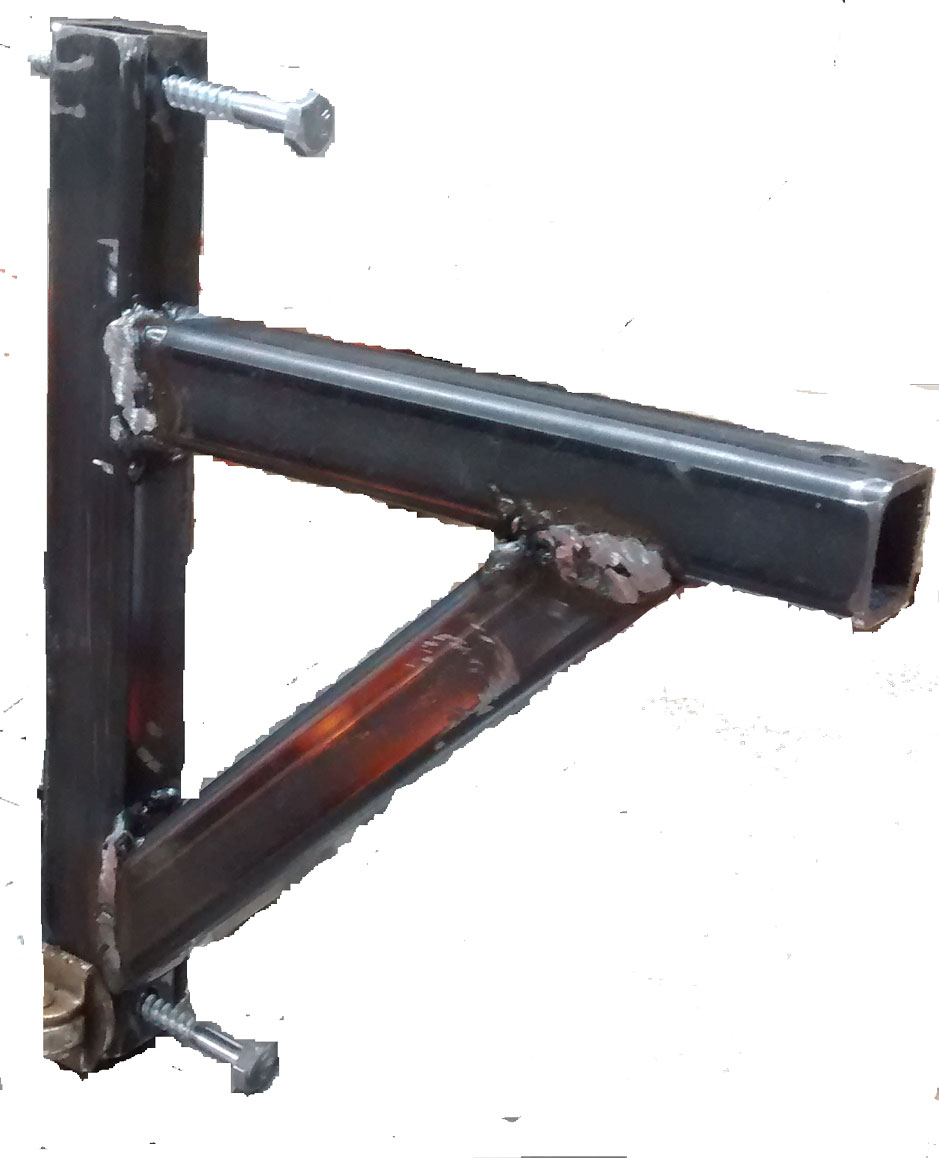So Jack explain to me how this is supposed to work ?
Same as the bracket system I described earlier in the thread. It is so I can safely erect a heavy tall ladder stand by myself. I can get an ATV to most places I'd put a stand on our farm so I can transport it pretty easily.
1. Assemble ladder sections and position ladder stand on the ground with the seat next to the tree.
2. Use and extension ladder to attaché the above bracket to the tree a foot or so above where to top of the seat will be using a drill and nut driver.
3. Run a rope through the pulley and tie one end to each side of the tree bar on the ladder stand.
4. On the other end of the rope on the other side of the pulley, I'll have a prussic knot so I can adjust the attachment point of the winch to the rope based on the situation.
5. Use the winch on my ATV (or some kind of hand crank winch if I for some reason could not get the ATV in) to lift the stand into approximate position.
6. Once the stand is vertical and in approximate position, release the tension on the winch so the stand rests against the tree.
7. Once vertical and leaning against the tree, I can make small adjustments in the stand position from the ground.
8. Use the extension ladder once again to go up and secure the stand to the tree. On the way down I'll bring the stabilizing straps down around the tree and connect them to one of the rungs as per instructions.
9. Climb up into the stand and remove the bracket from the tree and the rope from the tree bar.
The stand is erected without me lifting it and it is secured before I ever climb it. I have a bad back and my target stands are not the short, light-weight stands. I'm targeting the 21' double rail heavy Millennium stands or similar tall heavy stands.
I don't have any plans to produce these or sell them. I'm just passing on the idea to others who might be in a similar situation. In addition to it being a fun first welding project for me, I was trying to design something small and light enough for me to easily carry up a ladder and attach but heavy enough to withstand the torque if the ATV winch is positioned at a 90 degree angle. If I find it too cumbersome to attach with a drill and nutdriver bit while holding it, I can always use a strap to put it in position first so I have two hands free. I doubt I will need to.
The parts not shown in the picture is a J-bolt going through the hole on the horizontal piece. The pulley which swivels 360 degrees attaches to the J-bolt. When I use it next season, I'll try to take some pictures of the process.
Post #20 has some pictures of an early wooden version of the bracket in use. The concept worked pretty well, but the bracket itself was much to large and heavy to be practical. The stand in those pictures was a tall but much lighter Muddy. I did not need a winch for that. I was able to simply pull the rope by hand. I can't do that with the Millennium.
Thanks,
Jack

